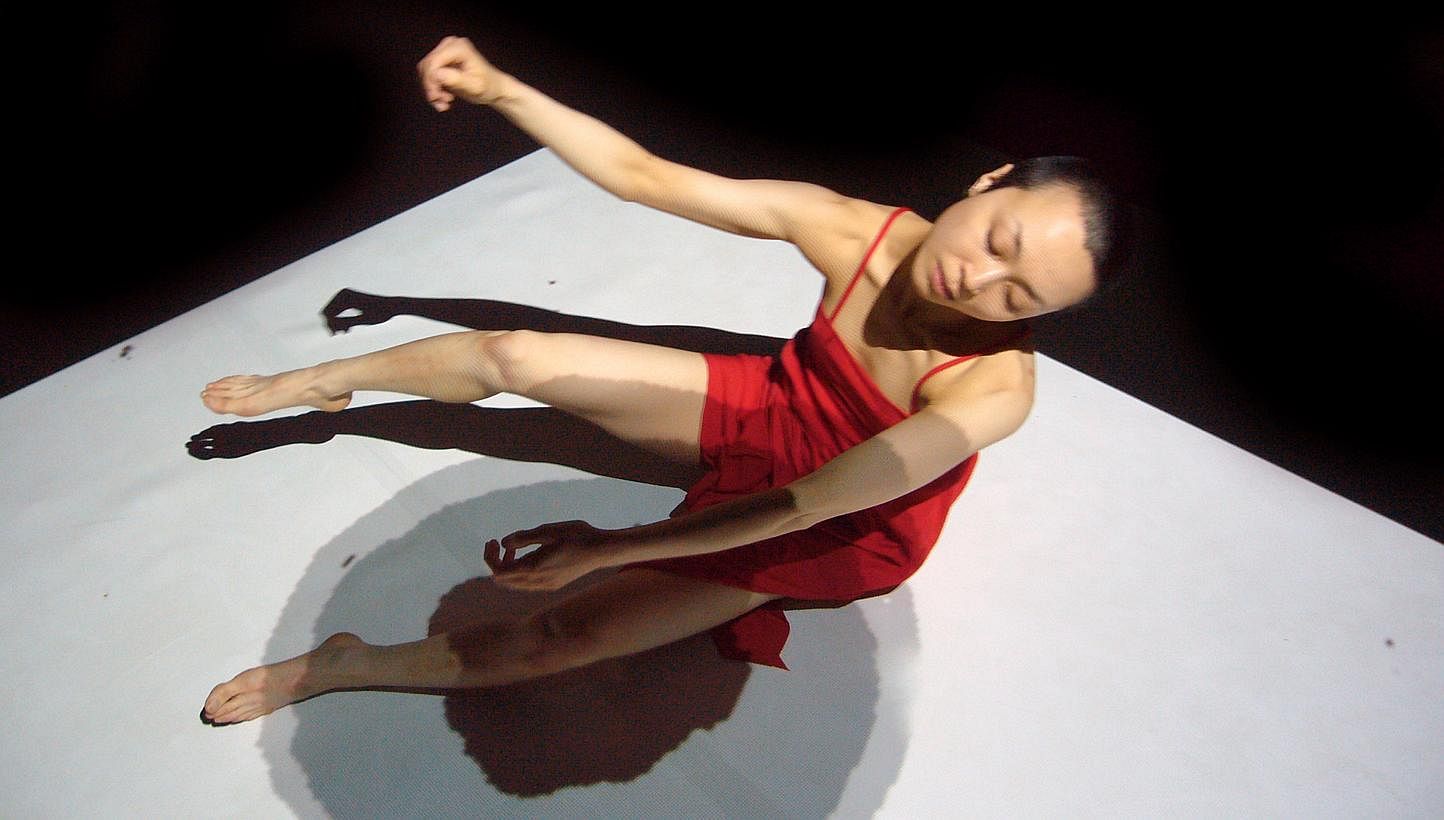Dance review: Neo-Butoh performer mesmerises in an immersive, discomfiting piece
Sign up now: Get ST's newsletters delivered to your inbox

Loss-Layers, by France-based collective A.lter S.essio, features solo performer Yum Keiko Takayama dancing with projections illustrated by Matthieu Levet and Cecile Attagnant. -- PHOTO: FABRICE PLANQUETTE
Germaine Cheng
LOSS-LAYERS (M1 Singapore Fringe Festival)
A.lter S.essio
Esplanade Theatre Studio/Saturday
Loss-Layers is much like its subject matter - immersive, consuming and discomfiting. France-based collective A.lter S.essio's offering at this year's M1 Singapore Fringe Festival is a multi-sensory assault that leaves the audience on edge.
The tumultuous emotional landscape of loss is illuminated by Loss-Layers' striking images, which are composed of the eloquent body of solo performer Yum Keiko Takayama and the projections illustrated by Matthieu Levet and Cecile Attagnant. The entire performance, though contained on a square platform, reverberates throughout the theatre space, demanding attention.
Takayama is first seen as a marionette, her limbs dangling from imaginary strings. Then she flips over to crawl on all fours as an intricate web begins to encase the platform in darkness. Desperate, her limbs seek out pockets of light as the churning soundtrack escalates into a fiercely pounding beat.
The loss of life, sanity, hope and self is embodied in Takayama's absorbing performance. A neo-Butoh dancer, she demonstrates absolute mastery of her instrument in the ability to transform her body almost instantly, and in turn, she transforms the space she inhabits. A dying human, a hyperactive conductor, a bitter suspect - these are but some of the spectacularly grotesque images Takayama conjures with her body.
Much of Loss-Layers holds the audience in a heightened state of discomfort with the brutal attack of Fabrice Planquette's immersive soundscape and the unrelenting throb of the lighting. It seems like a climax that plateaus, but soon it begins to gnaw away at the audience's clear vision. Gradually recognising the unnerving confluence of black and white, light and darkness, movement and stillness is like being rooted, held at gunpoint.
Without warning, a gong chimes and it causes a sharp collective intake of breath. The square platform flashes to white, revealing Takayama with eyes rolled upward and hands clasped. This happens repeatedly as Takayama shape-shifts into different figures of incompleteness - a lone waltzer, a hunched elderly lady. The projections are also in constant flux, morphing from a threatening swarm of flies to an imposing grid.
The relationship between Loss-Layers various elements blurs as the piece progresses. Takayama falls out of sync with the projections' changes, and she begins to move independently of them. Planquette's soundscape while still enveloping the space, begins to crackle. Perhaps this is a portrayal of the loss of clarity, but this causes Loss-Layers to lose its punch towards the end.
The work ends quietly with Takayama rising from the floor, stripped of her costume and bent over from the burden of the immense struggle that she has emerged from. Her body is covered in the tattoos of her loss and with her back facing the audience, wraps herself in an embrace. It is a solemn message - we live with loss, and our own arms could eventually be our only source of comfort.

